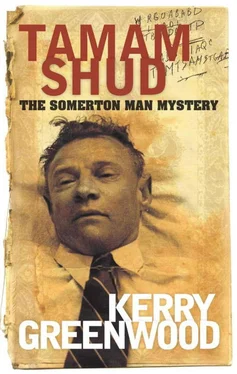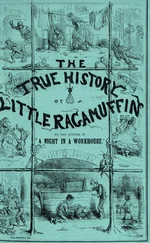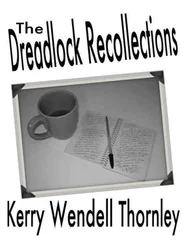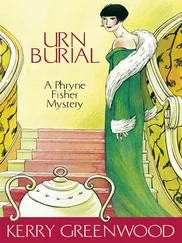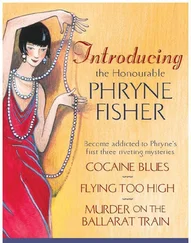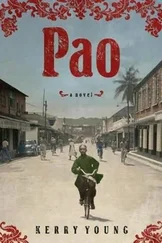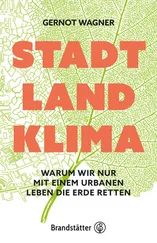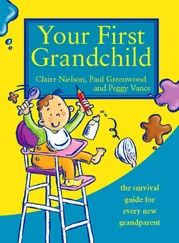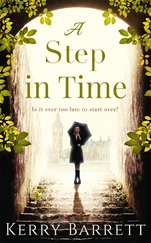Kerry Greenwood
TAMAM SHUD
THE SOMERTON MAN MYSTERY
This book is dedicated to the memory of my father AW Greenwood, much cherished, much missed. Daddy darling.
Ah, make the most of what we yet may spend
Before we too into the Dust descend;
Dust into Dust, and under Dust, to lie,
Sans Wine, sans Song, sans Singer and – sans End.
The Rubaiyat of Omar Khayyam , stanza 23
My mother has a strict regard for truth. She loves facts, history, biography. But my father taught me fiction because he told wonderful stories. Dad was a wharfie and a knockabout bloke, who ran away from his nice respectable middle-class home when he was fifteen to be a shearer; who had been everywhere and done everything; who invented a special tool to replace dolls’ arms; who felt that if a story needed embellishment to make it a good story, then he was the man to embellish it. I listened to his stories with huge enthusiasm, but I never really believed him. You wouldn’t bet your life on my dad’s veracity.
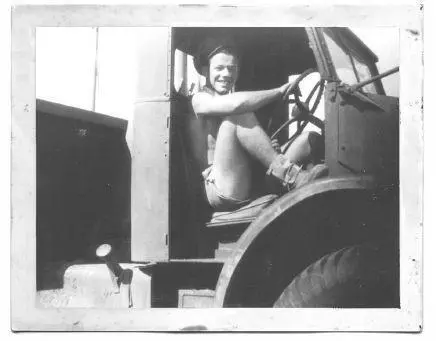
Al Greenwood came back from working in Adelaide and took a job at Melbourne Port as an off-season wharfie. He stayed there for the rest of his working life.
So no one was more surprised than me to find that the Tamam Shud mystery was all true.
In 1948 my father went to Adelaide. He had just got out of the army and had been stringing wires at Woomera Rocket Range as a signaller. He was slim and tanned with a mop of red curls and beautiful brown eyes. A friend of his, a boxer called Ray Dunn (also known as Killer), had had a disagreement with John Wren, the crime lord of the time, and felt that trying his luck in another city for a while might be wise, so he and my dad palled up. They stayed in Adelaide for almost a year.
In December 1948, my dad told me, the body of a man was found at the bottom of the steps on Somerton Beach. He was clean, manicured, well-nourished and well-dressed and had no visible wounds. Someone had gone to the trouble of removing all the labels from his clothes, which attracted immediate attention from the constabulary. And in the fob pocket of his pleated trousers, overlooked at first, was a piece of paper with the words ‘Tamam Shud’ on it. ‘Tamam Shud’ is the last phrase of The Rubaiyat of Omar Khayyam , the works of a Persian poet translated by Edward FitzGerald, which used to be a popular Christmas gift for relatives one did not know well. My father said that the rest of the book was found in a car belonging to a doctor, parked at the top of the steps down to Somerton Beach. The phrase ‘Tamam Shud’ had been torn out of it and on the back of the page there was an unbreakable code. The autopsy determined that the man had been poisoned but the poison could not be identified. He was buried in West Terrace cemetery and the police kept a body cast, but no one ever claimed him.
All true. I should have twigged, because, unusually, my dad’s story had no ending. No satisfactory solution. Years later, when I was casting about for a mystery to solve for a short story collection called Case Reopened , I remembered Dad’s Tamam Shud story and looked it up. And I found that not only had my dad been accurate, which was not like him at all, but that the case was even more peculiar than he had known.

Kerry as a fruit picker in 1975. Picking grapes was my own connection to Adelaide. For two weeks or more I would work all day dragging a bag of grapes through the rows of vines, happy as the sun was long.
I had my own Adelaide connection as well. I used to go there every summer in the seventies for the fruit picking. I stayed in East Terrace with a friend of mine and enjoyed the city, especially as a relief from all those grapes. But I have always been uneasily aware that under its hypercivilised veneer, Adelaide is an eerie place, where they rather go in for strange killings – Truro, Snowtown, The Family. Murder is universal but Adelaide murder always has a twist. I remember thinking, as I lazed around Central Market, drinking Italian coffee and eating jam doughnuts from the pie cart, that I would love to investigate the history of the city one day and see if I could work out what made it such a fey place.
They are all gone into the world of light. My Adelaide of the seventies is gone, along with my youth and strength. The Adelaide of 1948 is gone, both the authorised version and the one related to me by my dad. The man found on Somerton Beach is gone, cocooned in his mystery. My father has gone, three years dead. In this book I will try to understand all of them and provide some explanations and then I will have to close the book and let them all go.
I cannot tell you how that feels.
Up from Earth’s Centre through the Seventh Gate
I rose, and on the Throne of Saturn sate,
And many Knots unravel’d by the Road;
But not the Knot of Human Death and Fate.
The Rubaiyat of Omar Khayyam , stanza 31
On 30 November 1948, Mr John Baines Lyons, a jeweller, went for a walk with his wife along Somerton Beach, as was their habit if the weather was warm. It was the last day of spring and hot, so they were strolling along the foreshore at about 7 pm. Near the foot of the steps which led down to the beach they saw a man sitting, supported by the sea wall. As they passed, he extended his right arm and then let it fall. They concluded that he was not dead, although possibly dead drunk, and walked on.
Some time later, around 7.30 pm, a woman called Olive Constance Neill, a telephonist, saw the seated man from the road above the seafront. It was a warm night and there were other people about, including a man in his fifties, wearing a grey suit and hat, who was looking down, possibly at the man on the beach. Miss Neill directed her companion Gordon’s attention to the seated man and said, ‘Perhaps he’s dead!’ Gordon gave a cursory glance, observed that the man might indeed be dead because he wasn’t reacting to the mosquitos, and they passed on. Possibly with other things on their minds.
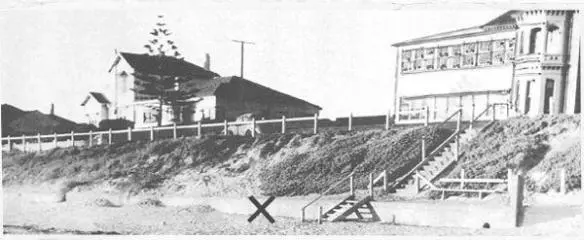
‘X’ marks the spot. The place where the body was found on Somerton Beach, Adelaide.
At about 6.50 am, the same John Lyons, who must have been a very athletic man, went for an early morning swim. When he emerged from the sea, he met a friend of his and they noticed men on horses gathered around the man Mr Lyons had seen the night before. On inspection, Mr Lyons affirmed that the man was dead. He went home to call the police and then returned to the scene. Brighton Police Station sent their Constable Moss, who found a body in which rigor was already fully established.
The man was lying with his feet toward the sea, still against the sea wall. He was well-dressed but he had no hat. He didn’t appear to have suffered any stab wounds or bullet wounds. No bruises or blood were observed and there was no disturbance of the scene. He seemed to have died, very quietly and peacefully, where he sat. His half-smoked cigarette had fallen out of his mouth and onto his lapel as he slumped but his chin was not even blistered.
Читать дальше
